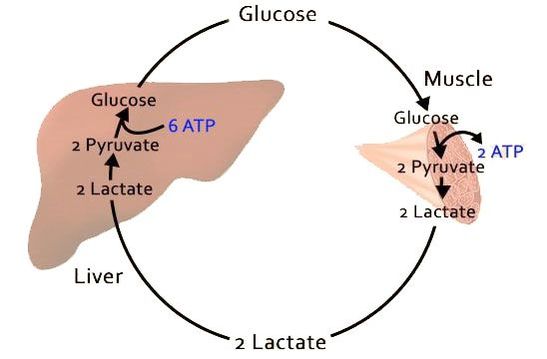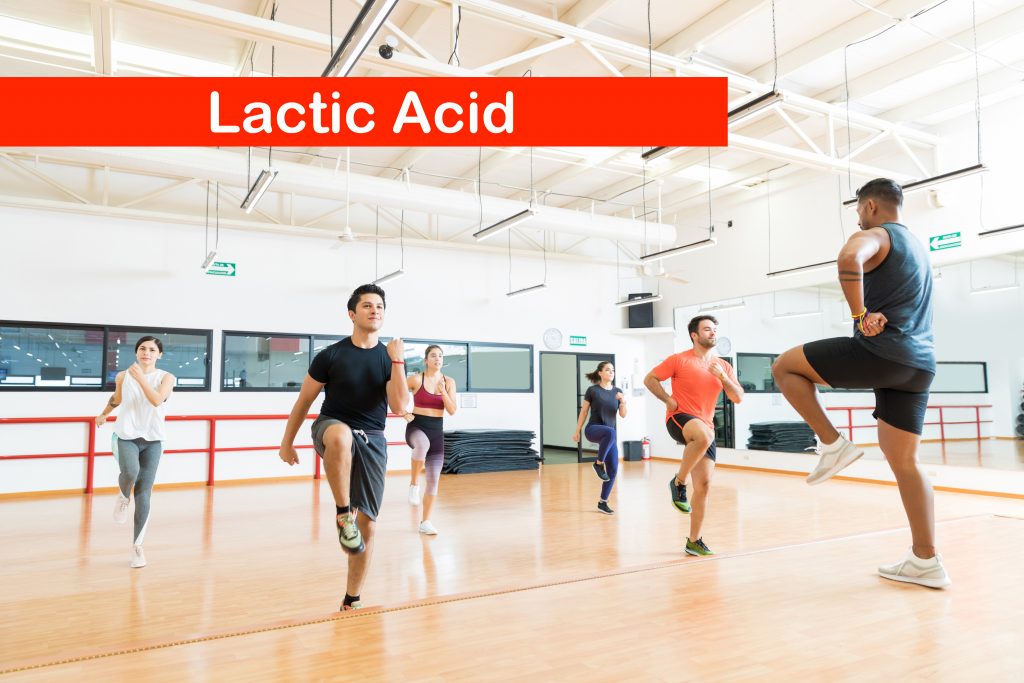
Lactic Acidosis is a condition caused by very high levels of lactic acid build-up. Lactic acid or to be precise, lactate, is the substance produced and released in the body anaerobically (without oxygen).
What exactly is lactic acid?
Lactic acid is often referred to when speaking about the byproduct of hard workouts. When your body breaks down glucose for energy, the substance it generates is called lactate.
Even if you have always used the correct term, most of what you learn about this vilified molecule is likely false. In this article, we will dive into lactic acidosis, and reveal if it causes for soreness and if you need to do anything about it.
At times, your oxygen intake may not be enough to go through an intense workout or physical activity so a substance called lactate is produced. Your body can transform lactate into energy without oxygen (anaerobic). The issue here is that it can be built up in your bloodstream quicker than it can be flushed out. The stage where lactic acid begins to add up is called the “lactate threshold.” If you begin to sense the signs of lactic acidosis while doing a physical activity, such as nausea and muscle burning sensations, start cooling off immediately. Lactic acid concentrations are set down to normal within an hour after physical intense activity. It is true that hiking or running after a workout brings its levels down quicker, but if you’re not doing anything, it also comes down quite quickly. Lactic acid build-up is temporary. It happens when your bloodstream gets too much acid. In a way, it’s like telling your body to stop what you’re doing.
 Lactic acid build-up into more detail…
Lactic acid build-up into more detail…
As your body practices, you start breathing quicker as you try to transfer more oxygen to your organs and active body parts. The body likes generating most energy using aerobic techniques, implying oxygen. However, some circumstances require power output quicker than the body can generate. Working organs produce anaerobic energy in such instances. This energy emerges from glucose through a method called glycolysis, where through a sequence of stages, glucose is separated down or metabolized into a material called pyruvate. But when oxygen is in short supply, the body momentarily transforms pyruvate into a material called lactate that enables for continued glucose breakdown — and thus power production.
Is Lactic Acidosis a self-sabotaging process?
Working muscle cells can sustain this form of anaerobic energy production for one to three minutes at elevated rates, during which period lactate can rise to high concentrations. A side effect of elevated lactate concentrations is an increase in muscle cell acidity and other metabolic disruptions. The same metabolic pathways that allow energy to break glucose perform poorly in high acidic levels. It does seem counterproductive that a functioning muscle produces something that slows its ability to perform better. In fact, this is a self-regulating mechanism; it avoids permanent damage during extreme physical activity by reducing the output of key systems required to keep muscle contraction. Once the body slows down, oxygen becomes accessible and lactate returns to pyruvate, enabling ongoing aerobic metabolism and power to recover from the high-intensity physical activity. It is a process that comes full circle.
Does lactate production slow you down during a workout?
Short answer: it does not. However, if you are looking for something that does, carbon dioxide is a perfect example that your body needs to get rid of. Most of the lactate you create during the training is transformed into’ electricity’ to drive your physical activity. Research from California University demonstrates that high-intensity physical activities teach the cells of your body to use lactate more efficiently in this respect. The scientists think that high-intensity regimens are the best way to enhance the capacity of your body to do this. It is recommended to attend at least two 20-minute HIIT activities each week to rip the benefits.
4 things you can do to prevent lactic acidosis?
1. Make sure to stay hydrated at all times: Have at least 8 glasses of water per day, increase your intake as you exercise more.
2. Warm-up, rest, and stretch should be the 3 golden rules of your workout routine to increase blood flow, boost strength, and alleviate tension. Introducing more oxygen to your body can decrease the production of lactic acid and eliminate any build-up from your body.
3. Enhance your breathing technique. Athletes who control their breathing improve their efficiency without growing concentrations of lactic acid. For an easy breathing technique, inhale through your nose gently and exhale through your mouth. After each inhalation, you may want to maintain your breath for a few seconds, but only if you feel comfortable with it. This can help bring more oxygen to your body, slow down lactic acid production, and assist in removing any buildup.
4. Increasing your magnesium consumption can help avoid and alleviate muscle soreness and spasms that may follow lactic acid buildup. It can also help to optimize energy production so your body gets enough oxygen while practicing. Magnesium-rich foods include nuts, legumes, leafy greens.
Does lactic acid induce joint pain?
People often believe that lactate substances create pain or a burning sensation because lactate comes hand in hand with hard training. Instead, soreness is caused by inflammation and micro-tears which happen in the joints during difficult training sessions. Chiropractic treatments and massage therapy are two services that we offer at Custom Chiropractor that can help with injuries, soreness, and inflammations after a heavy workout. The correct treatment will contribute to increased oxygen flow and to a reduction in lactate acidity. Contact us or schedule an appointment online to start your recovery today.







